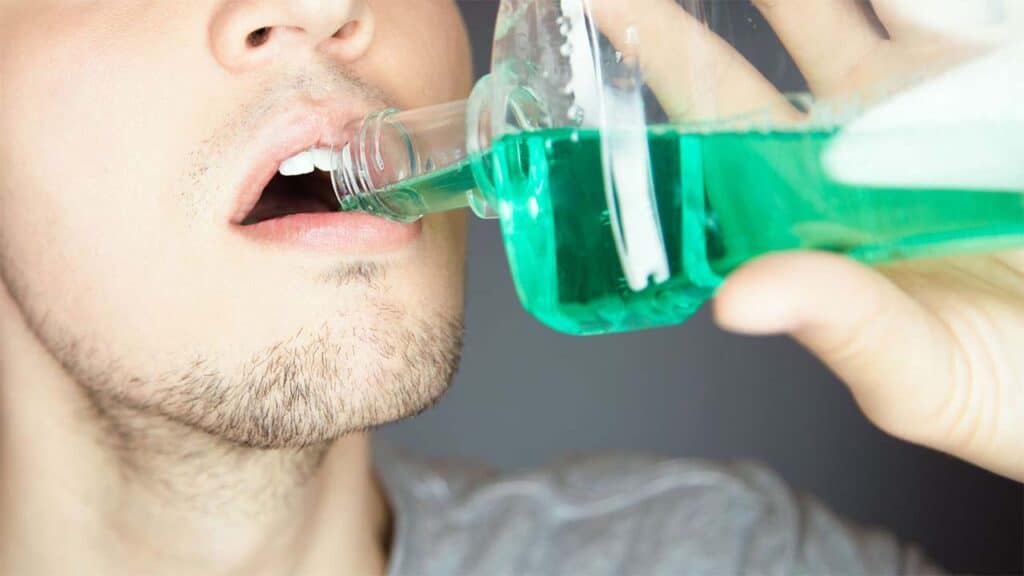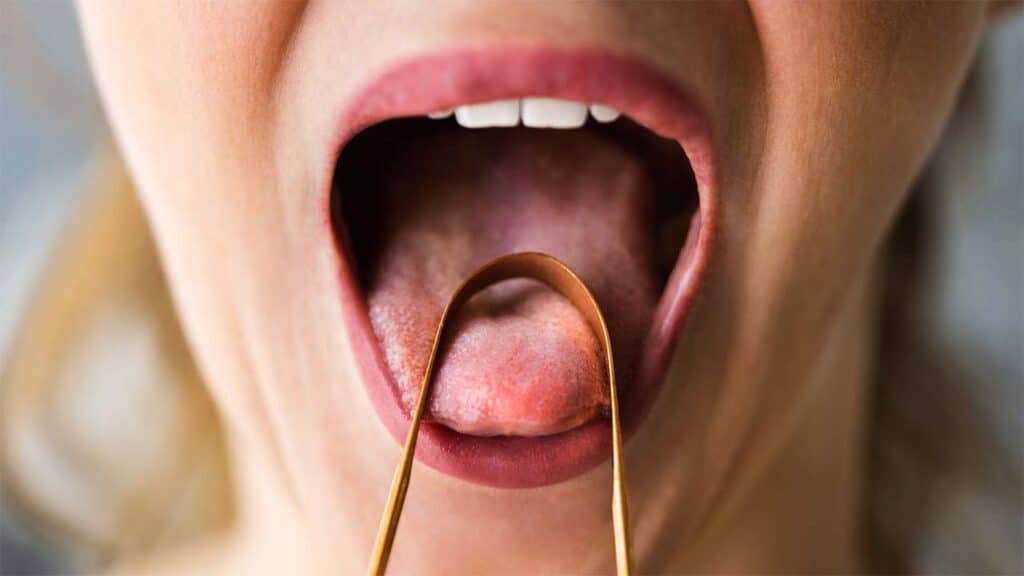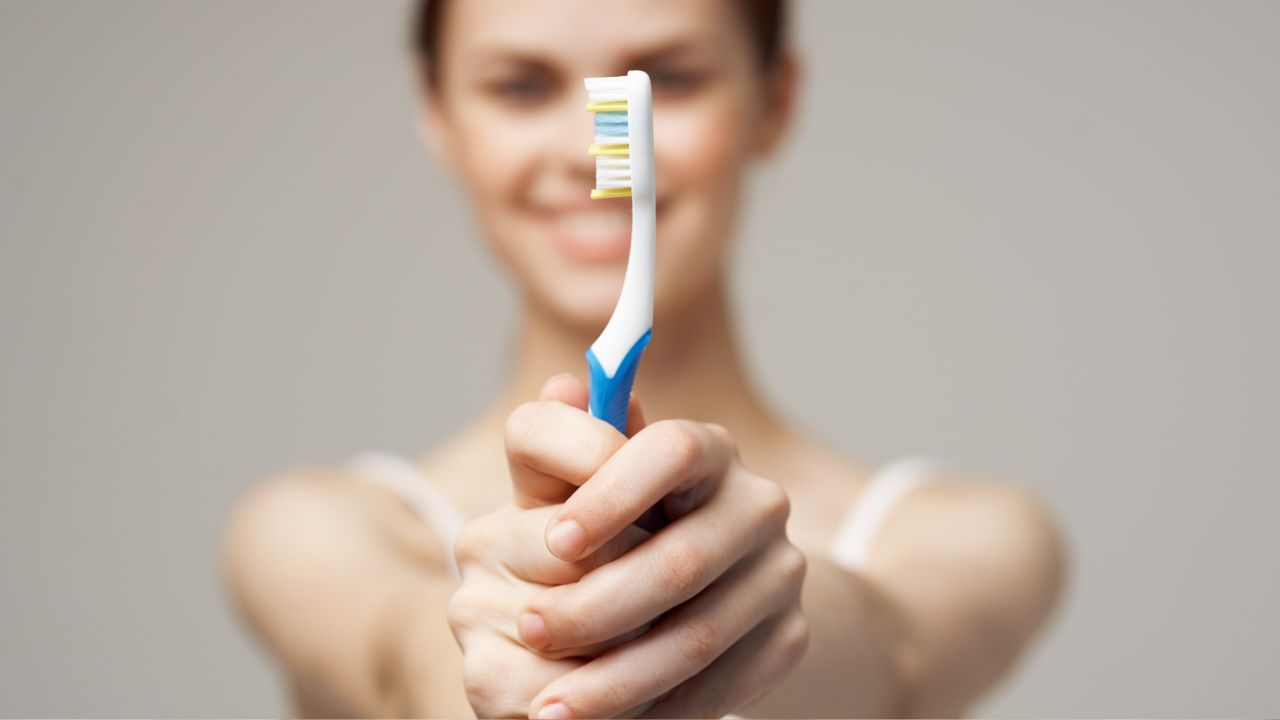Bad breath, also known as halitosis, can be a persistent and embarrassing problem for many people.
Bad breath can have a negative impact on your self-confidence and social interactions, whether it is the result of poor oral hygiene, particular foods, or underlying health conditions.
The good news is that there are plenty of simple and effective ways to prevent bad breath and maintain fresh breath throughout the day.
In this detailed guide, we’ll explore 10 easy ways to prevent bad breath, all of which are backed by sound dental advice. These methods will help improve your oral hygiene and keep your breath fresh, making you feel more confident in everyday situations.
1. Brush Your Teeth Twice a Day
Brushing your teeth regularly is the cornerstone of good oral hygiene. Food particles left in your mouth can decompose, causing bacteria to produce foul-smelling compounds.
By brushing your teeth at least twice a day—morning and night—you can effectively remove food debris and plaque that contribute to bad breath.
– How to brush properly:
– Use a fluoride toothpaste to strengthen your teeth and fight cavities.
– Brush for at least two minutes, ensuring you cover all surfaces of your teeth, including the front, back, and chewing surfaces.
– Don’t forget to brush your tongue, as bacteria can accumulate there, producing unpleasant odors.
Pro Tip: For an extra burst of freshness, use a toothpaste that contains baking soda, which neutralizes odors and gives your mouth a cleaner feel.
2. Floss Daily to Remove Hidden Food Particles
While brushing is essential, flossing plays a critical role in keeping your breath fresh. Dental floss helps remove food particles and plaque from areas that your toothbrush can’t reach, such as between teeth and along the gumline.
If food particles remain stuck between your teeth, they will decompose and cause bad breath over time.
– How to floss:
– Use about 18 inches of floss, wrapping most of it around your fingers and leaving a small section to work with.
– Gently slide the floss between each tooth, curving it into a “C” shape around the tooth and moving it up and down.
– Make sure to floss behind your back teeth as well, as this is a common place for trapped food.
Pro Tip: If you find flossing difficult, consider using interdental brushes or a water flosser to clean between your teeth.
3. Stay Hydrated to Prevent Dry Mouth
A dry mouth is one of the leading causes of bad breath, as saliva helps wash away food particles and bacteria that can cause odors.
When your mouth is dry, bacteria thrive and produce sulfur compounds that lead to bad breath. Staying hydrated is an easy way to prevent dry mouth and maintain fresh breath.
– Tips for staying hydrated:
– Aim to drink at least 8 glasses of water a day. More may be needed if you exercise or live in a hot climate.
– Carry a water bottle with you and take regular sips throughout the day, especially after meals.
– Chew sugar-free gum or suck on sugar-free candies to stimulate saliva production, especially if you have chronic dry mouth.
Pro Tip: Avoid beverages like coffee, alcohol, and soda, as they can dry out your mouth and contribute to bad breath.
4. Use Antibacterial Mouthwash for Extra Protection
Mouthwash can provide an additional layer of protection against bad breath by killing bacteria that cause odors.
Choose an alcohol-free mouthwash that contains antibacterial agents like chlorhexidine or cetylpyridinium chloride, as these ingredients target odor-causing bacteria while being gentle on your mouth.
– How to use mouthwash effectively:
– Swish the mouthwash in your mouth for at least 30 seconds, making sure it reaches all areas, including between your teeth and along your gums.
– Spit it out and avoid rinsing with water afterward to allow the antibacterial ingredients to continue working.
Pro Tip: For a natural alternative, try making your own mouthwash using water, a teaspoon of baking soda, and a few drops of peppermint essential oil. Baking soda neutralizes odors, while peppermint adds a refreshing scent.
5. Clean Your Tongue to Remove Bacteria
The tongue is often overlooked during daily oral care routines, but it can be a significant source of bad breath. The surface of the tongue, especially the back part, can harbor bacteria, food debris, and dead cells that contribute to unpleasant odors.
Cleaning your tongue is an easy and effective way to reduce bad breath.
– How to clean your tongue:
– Use a tongue scraper, which is specifically designed to remove debris from the surface of your tongue.
– Gently scrape from the back of your tongue toward the front, rinsing the scraper after each pass.
– You can also use the back of your toothbrush if you don’t have a tongue scraper, though it may not be as effective.
Pro Tip: Clean your tongue every time you brush your teeth to maintain optimal oral hygiene.
6. Choose Your Foods Wisely
Certain foods are notorious for causing bad breath, with garlic, onions, and spicy foods being among the most common culprits. These foods contain sulfur compounds that enter your bloodstream and are eventually exhaled through your lungs, resulting in lingering odors.
– Foods to avoid:
– Garlic, onions, and spicy dishes (due to their sulfur content).
– Sugary foods and drinks, which feed bacteria and promote the production of foul-smelling gases.
– Dairy products, which can leave behind residues that bacteria feed on.
– Foods to incorporate:
– Apples, carrots, and celery: These crunchy fruits and vegetables help clean your teeth and stimulate saliva production.
– Leafy greens: Spinach and kale contain chlorophyll, which acts as a natural deodorizer.
– Yogurt: Studies have shown that eating plain, unsweetened yogurt can reduce levels of odor-causing bacteria in the mouth.
Pro Tip: After eating odor-causing foods, rinse your mouth with water or chew on fresh herbs like parsley or mint to help neutralize the smell.
7. Chew Sugar-Free Gum for a Quick Freshen-Up
Chewing gum is a quick and easy way to freshen your breath when you’re on the go. It stimulates the production of saliva, which helps wash away food particles and bacteria. However, it’s essential to choose sugar-free gum, as sugar can promote the growth of bacteria and worsen bad breath.
– Benefits of chewing gum:
– Sugar-free gum, especially those containing xylitol, can help reduce bacteria in your mouth and prevent cavities.
– Chewing gum after meals can help clear away food particles and stimulate saliva production, which neutralizes odors.
Pro Tip: Opt for gum with a mint or cinnamon flavor for an added burst of freshness.
8. Quit Smoking to Improve Breath and Oral Health
Smoking not only stains your teeth and damages your gums but also contributes to chronic bad breath. Tobacco leaves a lingering smell in your mouth, and it reduces your ability to produce saliva, leading to dry mouth and an increase in bacteria.
– How to quit smoking:
– Seek support from friends, family, or a healthcare professional.
– Consider nicotine replacement therapy (NRT) options like patches, gum, or lozenges.
– Replace the habit with healthier alternatives, such as chewing sugar-free gum or engaging in physical activity.
Pro Tip: Once you quit smoking, your sense of taste and smell will improve, and your breath will naturally become fresher.
9. Visit Your Dentist Regularly
Regular dental checkups are essential for maintaining good oral health and preventing bad breath. Your dentist can identify and treat underlying problems such as gum disease, cavities, and plaque buildup, all of which can contribute to bad breath.
– How often to visit the dentist:
– Aim to visit your dentist every six months for a professional cleaning and checkup.
– If you have chronic bad breath, your dentist can recommend specific treatments or oral care products to address the issue.
Pro Tip: Don’t hesitate to schedule a visit if you notice persistent bad breath, as it could be a sign of a more serious condition like periodontal disease.
10. Use Natural Remedies to Freshen Your Breath
In addition to maintaining a good oral care routine, there are several natural remedies you can try to keep your breath fresh. These remedies are simple to make at home and are free from harsh chemicals.
– Natural mouthwash recipe:
– Mix 1 cup of water with 1 teaspoon of baking soda and a few drops of peppermint essential oil.
– Swish the solution in your mouth for 30 seconds, then spit it out. Baking soda helps neutralize odors, while peppermint adds a fresh scent.
– Herbal tea for fresh breath:
– Boil water and steep a teaspoon of dried peppermint or chamomile for 5 minutes.
– Drink the tea after meals to help reduce bad breath and promote digestion.
Pro Tip: These natural remedies can be a great addition to your regular oral hygiene routine for long-lasting freshness.
Conclusion
Bad breath can be a source of discomfort and embarrassment, but it doesn’t have to be. By following these 10 easy steps—brushing and flossing daily, staying hydrated, using mouthwash, and watching your diet—you can keep your breath fresh and maintain excellent oral hygiene.
Natural remedies, regular dental checkups, and quitting habits like smoking further help you achieve long-term results. Take control of your breath and enjoy the confidence that comes with a fresh, clean-smelling breath every day!












































